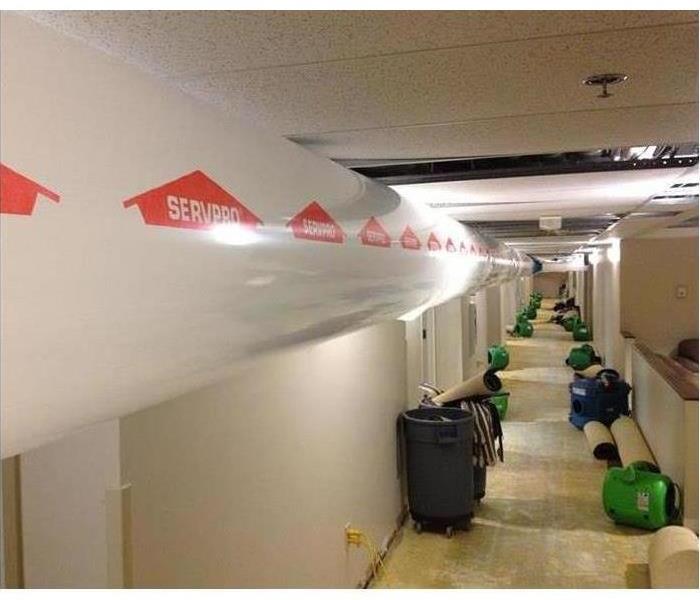Quick Guide to Mold Damage After Flooding
9/28/2021 (Permalink)
 This hotel suffered a large flood that affected all 3 floors, but SERVPRO was able to extract all the water and dry up the affected area.
This hotel suffered a large flood that affected all 3 floors, but SERVPRO was able to extract all the water and dry up the affected area.
Mold Damage Following A Flood: A Quick Guide
It's never fun to find standing water in your Claxton, TN, commercial building. If you have to deal with flooding, you likely have a lot of questions. How can you get rid of the water? What sort of damage might this cause? Getting all your questions answered by a skilled remediation team can make the aftermath of water damage easier to deal with. If you're dealing with flooding in your building, there are a few things you should know about mold growth.
It Happens Fast
Mold can start growing in your building 24 to 48 hours after the flooding starts. This fungus can start growing so quickly for a variety of reasons:
- Mold is naturally present in the air both indoors and outdoors.
- The spores expand into colonies when exposed to water or excess moisture.
- The microscopic spores can float in the air and enter your building through vents, doors and windows, if not already present in the building.
If left unattended, mold can start growing overnight.
It Requires Quick Action
Because of how quickly mold can start to grow, you need to react quickly to a flooded building. However, this fast reaction doesn't necessarily pertain to the mold growth right away. Before you can worry about what's growing, you need to get rid of the standing water. If you choose to remediate the mold before dealing with your water problem, the mold will be able to return because there is still plenty of water in your structure.
It Comes With Other Growth
If standing water is left unattended, you may have to deal with other sorts of growth. Even clean water from a broken pipe can quickly transform into gray or black water. Gray water introduces bacteria and viruses into the equation, while black water includes sewage and harsh chemicals.
If you think your building might have a mold growth problem, you need to react as quickly as possible. Quick action can help you keep your problem small.






 24/7 Emergency Service
24/7 Emergency Service